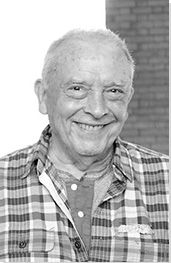Summary of David Bailey
An iconic photographer as well as a filmmaker, David Bailey revolutionized fashion photography and portraiture by introducing a new informality to his work, focusing on capturing the personality of the model or sitter. His use of stark white backgrounds, movement, and a direct, cropped perspective bring a sense of spontaneity to his portraits and he captured many celebrities at the height of their careers, often conveying ideas of energy, youth, and sexuality. Although he has documented London over many decades, Bailey's engaging 1960s fashion and street photographs are the best known and he helped to define the international image of the city during this period. Bailey's documentary work is no less dynamic, with his provocative film, Warhol by Bailey (1973) causing a backlash in some quarters for its references to sex, nudity and its implications of homosexuality.
Accomplishments
- One of the key figures in creating the appearance of London in the 1960s. Bailey documented a period of rapid social change, highlighting the growing street cultures of the city through his fashion photography. In doing so, Bailey helped to place London on the map as a global center of fashion and culture during the decade.
- Bailey is best known for his compelling portraits of celebrities and he has captured images of a host of rich and famous people over the course of his long career including: The Beatles, Mick Jagger, Princess Diana, and Kate Moss. His simple monochrome images with white backgrounds have become a style of portraiture in their own right.
- Initially getting the opportunity to work abroad with Vogue, Bailey introduced new locations to audiences through images which combined landscape, fashion, and portrait photography in a novel and informal way to create arresting insights into other cultures.
- Bailey co-founded the celebrity and fashion magazine, Ritz Newspaper. The publication was responsible for introducing the paparazzi style photograph to the UK, capturing and publishing candid or off-duty images of celebrities in shops, restaurants or on the street and printing them alongside society gossip columns and shots of parties and events. The Ritz provided the blueprint for many glossy magazines today including Ok!, Heat, and Closer.
Important Art by David Bailey
Jean Shrimpton, New York
In this black and white photograph, model Jean Shrimpton is seen inside a telephone box slightly to the right of center frame. She wears a bold plaid skirt and vest, and peers out at the viewer, adopting a modelling pose. To the left of the image, a middle-aged man in a traditional wool coat and hat enters a second phone box he, too, is looking at the camera. The placement and attire of the two figures results in a strong sense of contrast between them; colorful high-fashion versus staid normality; youth versus age; posed versus informal. Media-studies scholar Hilary Radner notes that in many of Bailey's photographs from the 1960s, "the urban environment acts as a frame of activity around the momentarily fixed pose of the model". In doing this, Bailey acknowledges the role of the image in promoting consumption: the outfit is displayed for both the viewer of the image as well as those on the street.
Shrimpton and Bailey often worked together and cite each other as important catalysts in their own careers. Bailey says, "People could identify with Jean because I didn't make her look like a stuffed shop mannequin. Suddenly she was someone you could touch, or maybe even take to bed". In another interview, he said of models like Shrimpton and Kate Moss, "They're the most peculiar women, I've never understood why everybody likes them so much. There are many more beautiful girls. But they've got this universal, democratic appeal. It's like Dietrich and Garbo in movies, they've just got this thing that makes them stand out."
Bailey enjoyed shooting fashion photographs in the streets. Citing fashion scholars Elizabeth Wilson and Gilles Lipovetsky, design historian Jess Berry asserts that fashion street photography, such as Bailey's, offers "a sense of immediacy and realism that is contrasted with the fantasies and dreams captured in studio based fashion images," and which expresses a democratic view of fashion. Simultaneously, Bailey's street photography of the 1960s helped to promote London as a leader in global fashion. Urban geographer David Gilbert argues that photographers like Bailey in fact present the city itself as a "fashion object", and according to Berry, it was Bailey who foregrounded "gritty streetscapes" and youth subcultures as key elements of London's fashion culture.
Photograph - Vogue
Balenciaga Wedding Dress
In this black and white photograph, a fashion model stands in a bare studio setting. She is seen from the back, wearing a Balenciaga wedding dress made of ivory silk organza, with a train, a matching shoulder-circling headdress, and gloves. The starkness of the studio setting, and the fact that the model's face is not visible, place the viewer's focus on the gown and enhances its sculptural qualities as it wraps and twists sinuously around the model, appearing as if it could be made of marble. This is enhanced by the use of strong shadows to highlight the folds of the dress. The accompanying text in Vogue noted that "Balenciaga gives cloth a purity and calm nothing can disturb" and Bailey's image captures the simplicity and elegance of the ensemble.
Bailey has called this photograph his "favourite fashion picture of all time." However, he also emphasized that, after that shoot, he felt like "that's it. I've done it now," believing that studio fashion photography very quickly becomes mundane, with the photographer just doing "the same old thing". Moreover, Bailey's primary interest was never in clothing, but rather in people, their peculiarities, and their personalities. Nevertheless, he considers his time at Vogue to have taught him "more about how to interact with people than about what sort of photograph I wanted to take."
Photograph - Vogue
Untitled (Editorial for Vogue UK)
In this image, a model in Islamic-inspired clothing crouches on the side of a sand dune. At her feet lies a simple fish shape made out of stones in the sand. Bailey included the fish in the photograph to reference the history of the area; The town of Göreme, Turkey, where this image was shot, was where the Christians hid from persecution during the Roman era. The area is known for its fairy chimney rock formations, one of which can be seen at the top of the image. Bailey liked that the shape both appears phallic, and referenced the shape of a policeman's hat. In including local landmarks and historical references, Bailey identifies and draws on the importance of the location, using this to highlight the clothes on display.
In 1970, Vogue sent Bailey to Turkey, as they felt that magazine readers were growing tired of studio shots, and that they wanted to see exotic locations. As Bailey explains, "foreign trips were very rare at that time," so Vogue aimed to allow readers to travel vicariously through the fashion images. Fashion journalist Marit Allen explains that "the shoot in Turkey was very timely and very influential. Everything was much more influenced by the exotic, the east, the Mid East, and other cultures". Islamic art was also very popular and this was Vogue's way of "dipping into it and bringing it home".
In the series of images that Bailey produced from the trip, he combined fashion photography with elements of history and travel and this produced a new style and aesthetic in fashion photography which appealed to readers. Vogue considered the shoot to be such a success and sent Bailey on a number of other trips, including to Egypt, India, Papua New Guinea, and South America. In each location, Bailey would spent only four or five days shooting for the magazine, then go off on his own to photograph local people, which he found much more satisfying and fulfilling than commercial work.
Photograph - Vogue UK
Warhol by Bailey
Of the three documentary films Bailey directed about celebrities - British fashion photographer Cecil Beaton (1971), Italian director and screenwriter Luchino Visconti (1972), and American artist Andy Warhol (1973) - it was the film about Warhol that most notoriously defied documentary filmmaking conventions, and generated nation-wide controversy. This was partially due to the perceived sexual indecency of many of the scenes in the film, such as a shot of artist Brigid Berlin making one of her 'Tit Prints' which she created by painting directly onto the canvas with her bare breasts.
Having known Warhol for many years, Bailey was familiar with the artist's timid nature and the near impossibility of getting him to loosen up during interviews, As a way of conducting the interview in a more intimate and comfortable setting, Bailey agreed to climb into bed with Warhol. Although no sexual acts were committed in these scenes, the allusion to homosexual love and intercourse also prompted critics to label the film as "shocking", "revolting," and "offensive". The film was temporarily banned, and its release date was pushed back by three months as opposing sides argued in court.
As in his Beaton and Visconti documentaries, Bailey was a maverick in terms of how he went about the filmmaking process for the Warhol film. He did not plan his shots or prepare storyboards or interview questions beforehand. Instead, he showed up each day to film, with no preconceived notion of what was going to happen. This made for a refreshingly casual sense of spontaneity, humor, and sincerity. Warhol by Bailey presented viewer with an intimate glimpse, not only of Andy Warhol, but also the final days of Warhol's factory and the eccentric creative people who collaborated in the space.
Documentary Film
Jack Nicholson
This neck-up, black and white portrait photograph of Hollywood actor Jack Nicholson, strongly recalls Richard Avedon's gritty, high-contrast, close-up portrait photographs of working-class and impoverished rural Americans. In Bailey's image, Nicholson's mouth is wide open, caught mid-laugh. Strong lighting is directed at the left side of his face, leaving the right side darkened by heavy shadow. The background is stark white, which Bailey preferred for portraits. He explains that "It's not because I'm lazy - it's because you take everything out till you've just got the person's personality." Bailey knew Nicholson well, spending a lot of time socializing with the actor and his then-girlfriend Angelica Houston (who Bailey also photographed regularly).
Capturing his sitter's personality has always been Bailey's forte, and he prefers photographing older individuals. He explains, "You treat each person as an individual. You adapt to who you're photographing. It's their personality, not mine I want." Here, Nicholson's exaggerated expression, and the contrast of dark and light on his face, imply a psychological depth and complexity that the public had already come to expect from him, after seeing him in wide-ranging film roles, from loving husband and father turned homicidal maniac Jack in The Shining (1980), to rebellious criminal who is subdued via lobotomy in One Flew Over the Cuckoo's Nest (1975), and fun-loving romantic Garrett in Terms of Endearment (1983).
Gelatin Silver Print - National Portrait Gallery, London
Untiitled (Havana)
In addition to his fashion and celebrity portrait photography, Bailey also undertook a number of personal documentary photography projects, including one on a 2005 trip to Cuba. Bailey's images from the trip focus on themes of poverty, resilience and commodification, with photographs of empty streets and run-down neighborhoods sitting alongside characterful portraiture. These two images of a Cuban woman serves as an example of Bailey's skill in color photography, although the majority of his oeuvre is comprised of black-and-white photos (as he believes this allows him to better expose the personality and psychology of the sitter).
In this portrait, color plays an important function in terms of capturing what cultural studies scholar Phillip Swanson calls a "double nostalgia" for the city, that is a "blurring of past and present" that involves the exoticization and fetishization of Havana's "struggle, poverty ethnicity, and female libidinousness". Although Bailey asserts that his Havana photographs offer "just a superficial look, not a soul-searching investigation, a quick impression of a place that is unique in its geographical position", James Clifford Kent, professor of Hispanic studies and Visual Culture, argues that Bailey's Havana photographs "function as projections of different pre-existing imaginaries of the city". This vibrant portrait serves to further exoticize and sexualize the subject, while her averted gaze positions her (and by extension, the tourism industry in Cuba more broadly) as a product.
Photograph
Queen Elizabeth II
This black and white photograph of Queen Elizabeth II was commissioned for her 88th birthday. Photographer Andy Fallon describes the portrait as "classic Bailey... it's right back to the types of stuff he was doing in the 60s". The monarch is pictured in a dress designed by her personal assistant and senior dresser Angela Kelly, and is captured smiling and looking relaxed. Bailey's ability to expose this softer, human side of a woman generally perceived as austere, was precisely what was desired by the government's GREAT Britain campaign, who commissioned the portrait as part of their mission to promote the United Kingdom to an international audience.
As in all of his portrait shoots, Bailey spent a considerable amount of time with the Queen. Journalist Mick Brown explains that, Bailey spends the majority of the shoot time getting to know his sitter, "watching the body language, the way his subjects use their hands, the little tics they may never have noticed themselves". Bailey says that this part of the process can be "knackering sometimes! You talk to them first, flirt with them, piss them off... try and get to them so you can get past that shiny, polite veneer most of them walk about parading." During his first shoot with the Queen, he says, "We laughed all morning with her".
Bailey admits "I've always been a huge fan of the Queen. She has very kind eyes with a mischievous glint. I've always liked strong women, and she is a very strong woman." Having photographed some of the most famous people in the world, Bailey was undaunted by the prospect of capturing the Queen on film, revealing that sometimes photoshoots are easier with those used to the spotlight as "they're not so nervous". He says, "I treat the boy down at the post office like the president of Russia, and the president of Russia like the boy down at the post office."
Ink jet print on paper - National Portrait Gallery, London
Biography of David Bailey
Childhood
David Bailey was born to Herbert Bailey, a tailor's cutter, and Gladys, a machinist. When he was three years old, his family moved from Leytonstone to East Ham, both East End districts of London. They were poor, and shared a two-up two-down house with another family. Bailey recalls, "My father was never there. My mother's brother, Artie, was gay and I shared a room with him, and my father was really uptight about it. I mean, he was ignorant. He was just an East End guy. Women and drink. Whole life devoted to it."
When it was cold, Bailey's mother would take him and his sister to the cinema five or six times a week, as it was cheaper than staying at home and paying for gas to keep the house warm. A side effect of these cost-saving outings was that Bailey became very familiar with the world of film, learning about all the Hollywood actors and directors.
Bailey remembers living through the Blitz of 1940 and 1941, during which, to his dismay, the local cinema was destroyed. He recalls that "We weren't evacuated. In the East End, nobody was. Spent most of it down the coal cellar." The most poignant memory he has from the period is the sound of broken glass, as he says everywhere he and his friends went, there was broken glass underfoot. This experience also made him profoundly aware of death from a young age.
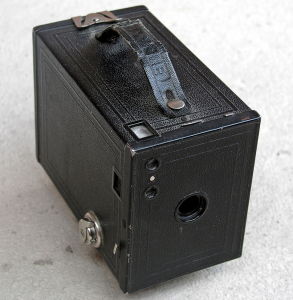
After struggling in state education, Bailey attended a private school, Clark's College in Ilford, but his difficulties continued due to undiagnosed dyslexia and dyspraxia. He claims that in one school year he only attended for thirty-three days. From an early age Bailey was fascinated by natural history and birds, and he planned to become an ornithologist like his idol James Fisher (whom Bailey describes as "the David Attenborough of the Forties"). He got his start in photography by "messing around" with his mother's Box Brownie camera, learning to develop his own photos by the time he was twelve. He explains that his initial interest in photography was more about the "magic" of working with chemicals, rather than the images themselves.
Education and Early Training
On his fifteenth birthday, Bailey left school, and began working as a copy boy at the Fleet Street offices of the Yorkshire Post. Over the next three years he worked a series of menial jobs before being drafted for National Service in 1956. He remembers, "I tried to get out of it by making out I was gay. But I think everybody tried that. They say, 'What's your favourite sport?' And you say, 'Ping-pong.' But it didn't work because every fucker tried it. I feel sorry for the ones that were gay, because nobody believed anybody."
He joined the Royal Air Force, noting that, "I knew I wouldn't be flying anywhere as I wasn't trained up so I spent day after day reading books or magazines down in a little hut I had on the airstrip. Magazines like Time and photography journals were where I first started seeing the work of other photographers. I never really thought of it as being artistic - to me, Picasso or Braque were artistic. But the spark must have been triggered somehow. As a kid I used to draw or paint and I continued in the Air Force. I used to spend hours drawing the Disney characters over and over again. My mates must have thought I was a bit mental."
In 1957, he served in Singapore. While there, he developed his interest in photography, "Singapore was a tax-free port so they virtually gave you a camera every time you bought a packet of cigarettes! I remember getting a cheap copy of a Rolleiflex and then after a bit taking it to the local Chinese pawn shop and trading it up for something better." When he was demobilized in August 1958, he set his sights on a career as a professional photographer.
Bailey hoped to enter the London College of Printing, but was turned down due to his poor school record. Instead, he sent letters to various photographers seeking apprenticeship opportunities. He was taken on as second assistant by David Olins, a photographer who contributed regularly to the women's fashion magazine Queen. During his six months with Olins, Bailey worked mainly as a messenger boy, earning just over £3 per week.
In 1959, he received a phone call inviting him to interview with photographer John French, who also employed Bailey as a second assistant. He notes that, as with Olins, he learned "very little" with French, yet the experience was beneficial as French was "shooting for Vogue and Harper's and some fairly prestigious magazines with clients and models, gay people, straight people, working class, posh." Bailey says that French's studio "was an environment that taught me more about how to interact with people than about what sort of photograph I wanted to take."
Mature Period
In 1960, Bailey left French's studio and worked for various newspapers and magazines including The Daily Express and Women's Own. In February 1960, the same month as he married he first wife Rosemary Bramble (the marriage lasted just 11 months), Vogue offered him a contract, but Bailey turned them down. He says, "I had no real idea what Vogue meant in those days, all I knew is the money they offered me was less than what I was already earning. So I told them to sod off."
Yet Vogue persisted with their offer, and in July, art director John Parsons convinced Bailey to sign the contract. Bailey explains, "If someone offers you the chance to take pictures of pretty girls in frocks all day there are only so many times you can say no. But I always knew what I was there for at Vogue and those fashion magazines - it was to sell frocks. And I never wanted to be a fashion photographer. I was always more interested in people." Nevertheless, within a matter of months, Bailey was shooting cover images for Vogue, and in one year alone, he shot 800 pages of Vogue editorial.
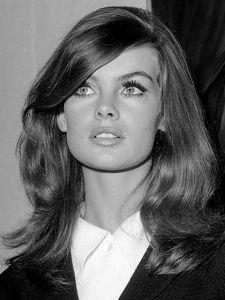
During this period, Bailey developed a close relationship with model Jean Shrimpton. The two were romantically involved for a number of years and worked together on photo shoots for several decades. As Bailey remembers, "My first glimpse of Jean Shrimpton was when I poked my head round the door of my mate Brian Duffy's photographic studio...I just fell in love with her eyes - the first thing I noticed - and said 'who's that girl?' Duffy said: 'Forget it, Bailey, she's too posh for you.' I think we fell in love with each other straight away, although I was an odd choice for Jean. She'd been used to people who drove MGs and were called Ponsonby or something, and suddenly she'd met this East End bloke with a Morgan who couldn't even spell Ponsonby."
The pair helped launch each other's careers and a 1962 photoshoot in New York for Vogue brought them both to wider attention. Shrimpton was an important participant in Bailey's shoots, as he notes, "She was an exceptional model. It's something you can't put your finger on. I suppose it's a kind of visual intelligence. I didn't explain anything to her; she had instinct, she knew how to move."
As his fame grew, the attractive and energetic young Bailey began to socialize with A-list actors, musicians, and even members of the royal family. During this time, Bailey, along with fellow photographers Terence Donovan, and Brian Duffy, photographed their celebrity friends, creating now iconic images. While Bailey's social circle was extensive, some of his closest friends included artist Andy Warhol, actor Jack Nicholson (who is the godfather of one of Bailey's sons), and Nicholson's then-girlfriend, actress Angelica Houston.
In 1965 Bailey married French actress Catherine Deneuve and around this time he began directing and producing television commercials. He also photographed album art for musicians such as The Rolling Stones, Cat Stevens, Alice Cooper, and Marianne Faithfull. In 1976, he married a third time, to American fashion model and writer, Marie Helvin.
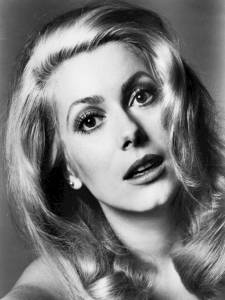
Between 1968 to 1973, Bailey directed and produced documentaries about celebrities, including Beaton by Bailey, Warhol by Bailey, and Bailey on Visconti, which aired on national television. Bailey did not go into the shoots with a predetermined plan of what he was going to capture or what he was going to ask during interviews with the subjects. Even before it aired, Warhol by Bailey generated a great deal of media attention and controversy due to its sexually suggestive content.
From 1970, Bailey began to be sent abroad more regularly, predominantly to take fashion photographs in far-flung locations in the hope that these would engage magazine readers in new ways. The images he created on his travels to places such as Turkey and Peru fused fashion photography with documentary styles to create narrative-focused travel images with a high-fashion component. He also used these trips to photograph local people and sights, later compiling these photographs for books and exhibitions.
By 1976, Bailey was burnt out with his work for Vogue, finding the commercial side of it to be unstimulating and repetitive. At the same time, photographers Guy Bourdin and Helmut Newton were creating a new aesthetic in the field of fashion photography and eclipsing Bailey. Bailey left the magazine, and he and illustrator David Litchfield founded Ritz Newspaper which focused on gossip, fashion, and celebrity, marking the start of paparazzi photography in Britain. Throughout this period, he also shot celebrity portraits for Harper's Bazaar and The London Times and continued his documentary assignments.
In 1985, Bailey photographed celebrities at the Live Aid concert at Wembley Stadium. He recalls, "The atmosphere on the day was great. At one point I got a tap on my shoulder and spun round. Suddenly there was a big tongue down my throat! It was Freddie Mercury."
Late Period
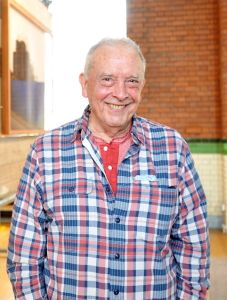
During the 1990s, Bailey continued to direct for television, including the BBC drama Who Dealt? (1992), and the South Bank Film, The Lady is a Tramp (1995), which starred his fourth and current wife Catherine Bailey (nee Dyer, whom he had married in 1986). He also directed the feature film The Intruder in 1999.
Bailey was awarded the title Commander of the Order of the British Empire (CBE) in 2019. He currently works out of London and has a second home near Plymouth, on England's south coast. In addition to his photography and filmmaking work, he enjoys oil painting, which he finds to be a relaxing pastime. In September 2020, he exhibited fifty of his oil paintings in Flannels, a clothing store on Oxford Street, London.
Bailey has three children with Catherine, Paloma (named for Picasso's daughter), Fenton, and Sascha. Determined not to have his youngest son go through the same traumatic school experience as himself, Bailey sent Sascha (who is also dyslexic) to a school with a specialty in the area. Sascha is now an art curator, and Fenton and Paloma also have arts-related careers, with Bailey noting that, "It's natural for them".
The Legacy of David Bailey
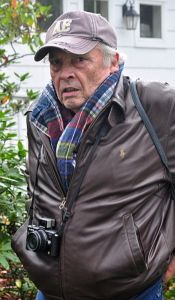
Now in his 80s, Bailey is still active and over the course of his long career he has published more than forty books and created over 500 commercials and films. He set the standard for fashion photography in magazines such as Vogue and Harper's Bazaar, creating the aesthetic of the 1960s (along with photographers Terence Donovan and Brian Duffy) as one that was gritty, urban, and linked with music subcultures such as punk and rock. Bailey never felt restricted by existing photography styles and tropes and instead continued to experiment throughout his career, pushing boundaries to create iconic images of people and clothing that defined an era.
Bailey introduced a new informality into portrait photography, capturing his subjects relaxed and often in movement. He did this by focusing on putting subjects at ease and building a rapport before and during a photo shoot. In this manner, Bailey created unusual and charismatic images of a whole host of celebrities, creating and cementing their image in the public eye. These techniques were adopted by photographers such as Guy Bourdin, Helmut Newton, and Bruce Weber, influencing the appearance of their work.
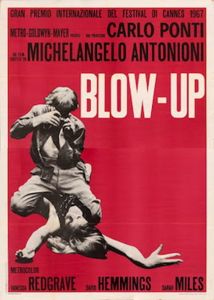
Vogue historian Robin Muir describes Bailey as "a sweet-talking, eye-lash fluttering boy who swept in from the East End and charmed the pants off every man and woman he met." Bailey's charisma and energy was so well known that he is said to have inspired the main character, a fashion photographer, in Michelangelo Antonioni's cult movie Blow-Up, which premiered in 1966.
Influences and Connections

-
![Diane Arbus]() Diane Arbus
Diane Arbus -
![Bill Brandt]() Bill Brandt
Bill Brandt - John French
- John Barry Pierpoint Cole
- George Brassaï
-
![Damien Hirst]() Damien Hirst
Damien Hirst -
![Andy Warhol]() Andy Warhol
Andy Warhol - Terence Donovan
- Brian Duffy
-
![Fashion Photography]() Fashion Photography
Fashion Photography - Portrait photography
-
![Helmut Newton]() Helmut Newton
Helmut Newton - Guy Bourdin
- Bruce Weber
-
![Damien Hirst]() Damien Hirst
Damien Hirst -
![Andy Warhol]() Andy Warhol
Andy Warhol - Terence Donovan
- Brian Duffy
-
![Fashion Photography]() Fashion Photography
Fashion Photography - Portrait photography
 Ask The Art Story AI
Ask The Art Story AI